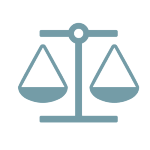9th Circuit Keeps Autodialer Definition in Line with FTC Guidance from 2015
The 9th Circuit Court of Appeals held that the statutory definition of an automatic telephone dialing system included a device that stored telephone numbers to be called and did not depend solely on whether those numbers had been generated by a random or sequential number generator.
The case revolved around a consumer who received a series of text messages from a gym that he had joined. The consumer alleged that the gym sent him three text messages that his phone carrier charged him for. The consumer filed a putative class action against the gym and alleged the gym violated the TCPA by using an ATDS to send him the alleged text messages. The gym filed a summary judgement motion arguing the system it used did not have the capacity to store or produce telephone numbers to be called using a random or sequential number generator and did not fall under the definition of an ATDS. The trial court granted the motion and the consumer appealed the decision.
In considering the consumer’s case, the 9th Circuit evaluated the D.C. Circuit’s recent decision in ACA Int’l v. FCC and determined that since the D.C. Circuit vacated the FCC’s interpretation of an ATDS, the 9th Circuit could only rely on the statutory definition of an ATDS found in the TCPA. The 9th Circuit determined that the TCPA’s definition of an ATDS was ambiguous and decided to consider the context and structure of the TCPA. The 9th Circuit found that after the FCC issued its 2015 declaratory order, Congress amended the TCPA without making changes to the definition of an ATDS. The 9th Circuit, therefore, inferred that Congress was aware of the existing definition of an ATDS and gave the definition its “tacit approval” when it decided not to overrule the FCC’s interpretation.
The 9th Circuit reversed the trial court’s order granting the gym’s motion for summary judgement and held that ATDS “means equipment which has the capacity – (1) to store numbers to be called; or (2) to produce numbers to be called, using a random or sequential number generator – and to dial such numbers automatically (even if the system must be turned on or triggered by a person).”
The case is Marks v. Crunch San Diego, LLC, No. 14-56834 (9th Cir. 2018).

